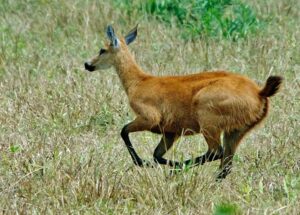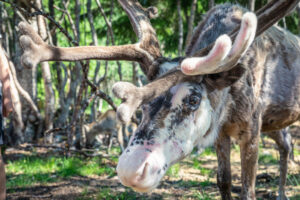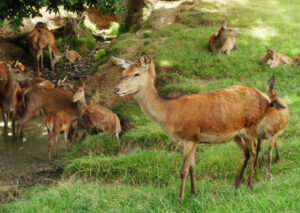Antlers Unveiled: A Comprehensive Study of Reindeer Antler Growth and Function
Antlers, the prominent headgear of reindeer (Rangifer tarandus), have long captured the fascination of scientists and nature enthusiasts alike. Beyond their aesthetic appeal, reindeer antlers play a crucial role in the survival and behavior of these remarkable creatures. This comprehensive study delves into the intricacies of reindeer antler growth and function, shedding light on the physiological, ecological, and behavioral aspects of this unique phenomenon.
Antler Growth:
Reindeer antlers are one of the fastest-growing tissues in the animal kingdom. The growth process, known as antlerogenesis, begins in spring and culminates in late summer. Unlike horns, which are permanent structures, antlers are shed and regrown annually. The antler growth rate is astonishing, with some reports indicating an inch per day during peak development.
The growth is primarily driven by the activity of specialized cells called osteoblasts and osteoclasts. Antlers are composed of bone tissue and covered in a velvety skin, rich in blood vessels and nerves, known as velvet. This velvet not only protects the antlers during their rapid growth but also serves as a conduit for essential nutrients.
Function of Antlers:
The primary function of reindeer antlers extends beyond their impressive size and intricate formations. These structures play a crucial role in various aspects of reindeer life, contributing to their survival and reproductive success.
- Mate Selection: During the mating season, or rut, male reindeer employ their antlers in dramatic displays of dominance and competition for mates. The size, shape, and symmetry of antlers serve as signals of an individual’s fitness and genetic quality, influencing the mate selection process.
- Communication: Antlers also function as tools for communication among reindeer. They produce a variety of sounds when clashing or scraping against each other, serving as audible signals during confrontations or interactions. These acoustic signals contribute to the establishment of social hierarchies and the avoidance of physical conflicts.
- Thermoregulation: The large surface area of antlers, coupled with the extensive network of blood vessels in the velvet, aids in thermoregulation. During warmer months, reindeer can dissipate excess heat through their antlers, contributing to overall body temperature regulation.
- Resource Acquisition: Antlers are used for foraging, allowing reindeer to access food sources that would otherwise be out of reach. By utilizing their antlers to strip bark or reach high branches, reindeer can secure vital nutrients, especially during harsh winter conditions when food may be scarce.
In conclusion, the antlers of reindeer represent a multifaceted adaptation that goes beyond mere adornment. The rapid growth, intricate structures, and diverse functions of antlers highlight the remarkable evolutionary strategies employed by reindeer for survival and reproductive success. Understanding the nuances of antler growth and function provides valuable insights into the complex interplay between physiology, ecology, and behavior in this iconic species. As we unveil the mysteries of reindeer antlers, we gain a deeper appreciation for the intricate mechanisms that shape the natural world.




